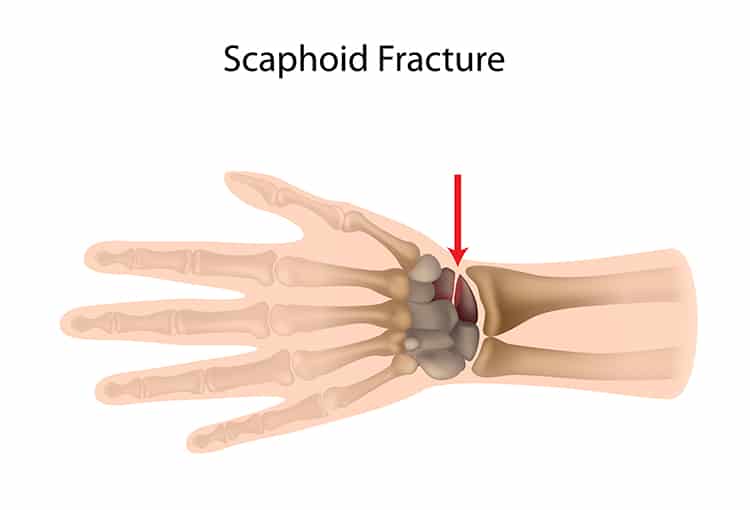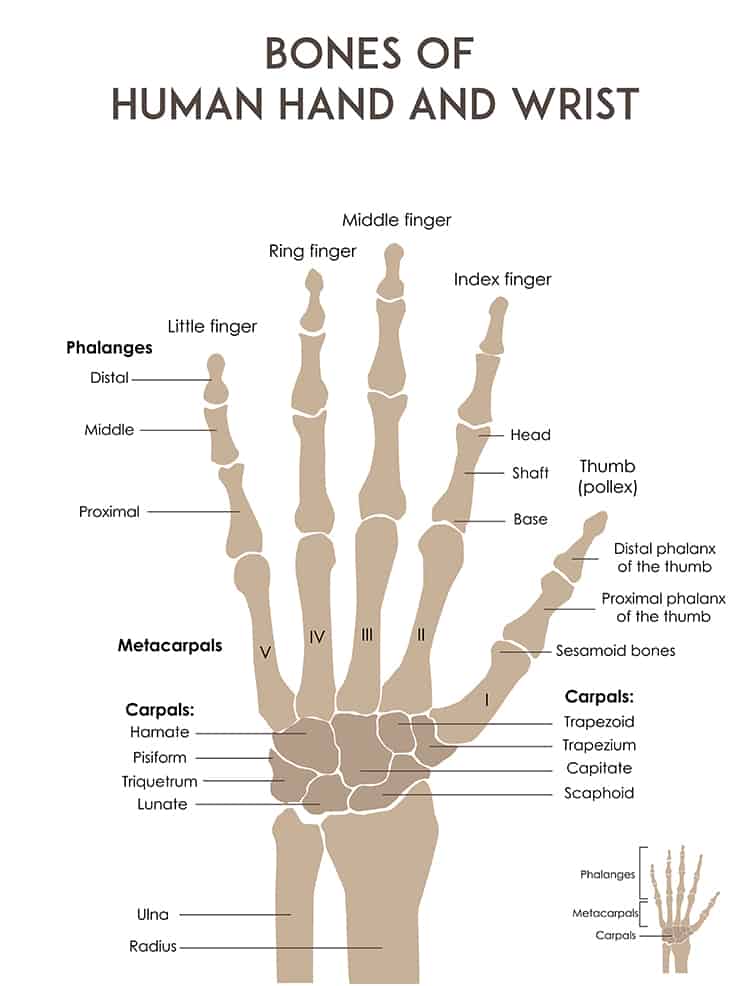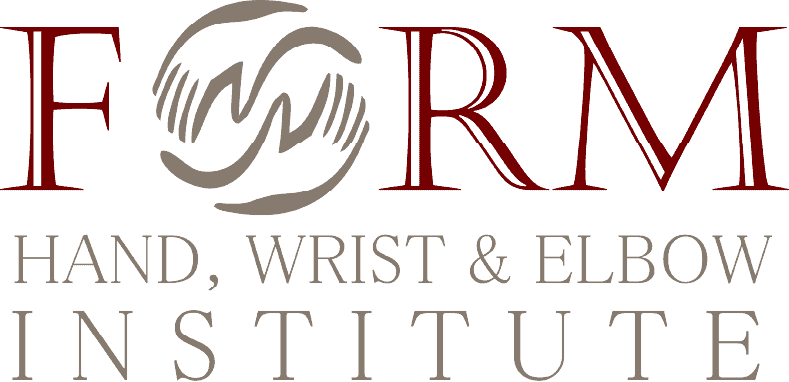Scaphoid Fracture
A scaphoid fracture is a break in one of the small carpal bones of the wrist, and it most often occurs after a fall onto an outstretched hand. Most scaphoid breaks are in their mid-portion, but they can also occur at both the proximal and distal ends of the bone.
Scaphoid fractures can further be classified according to the severity of displacement or how far the pieces of bone have moved out of their normal position. In a non-displaced fracture, the bone fragments line up correctly.
In a displaced fracture, the bone fragments have moved out of their normal position, and there may be gaps between the pieces of bone or fragments may overlap each other.

Wrist Anatomy

Causes of a Scaphoid Fracture
Scaphoid fractures can occur when you fall on an outstretched hand. Depending on the position of the hand on landing, especially with your weight landing on your palm, there is a risk of breaking the end of the larger forearm bone (the radius).
Scaphoid fractures can also occur as an injury during sports activities or motor vehicle collisions
Symptoms of a Scaphoid Fracture
Diagnosing a Scaphoid Fracture
During your consultation, Dr. Besh will ask you questions about how the injury occurred, your medical history, and any medications you may be taking. He will also examine your wrist looking for any swelling, bruising, or loss of motion.
Additionally, Dr. Besh may order imaging studies, such as:
X-ray. X-rays provide images of dense structures such as bone to determine if you have a scaphoid fracture or if the broken pieces of bone are displaced or not.
Magnetic Resonance Imaging (MRI) Scan. An MRI is used to provide images of the bones and soft tissues in your wrist. It can sometimes show a scaphoid fracture before it can be seen on x-ray.
For the convenience of our patients, both x-rays and MRIs can be done on-site.
CT Scan. A CT scan can help reveal a scaphoid fracture and show whether the bones are displaced.
Results from your imaging studies will help Dr. Besh determine your treatment plan.
Treatment for a Scaphoid Fracture
Both non-surgical and surgical treatment options are available to treat a scaphoid fracture.
Non-surgical treatment options include wearing a wrist splint or cast for 4 to 6 weeks and restricting your activity. The splint or cast is usually placed below the elbow and includes your thumb.
Custom-made splints are made by FORM hand therapists.
Surgical treatment options are recommended for scaphoid fractures where pieces of bone are displaced. The goal of surgery is to realign and stabilize the fracture to promote healing. An open reduction and internal fixation (ORIF) procedure is done to manipulate the bone back into its proper position, and hold the scaphoid in place with metal implants until the bone is fully healed.

